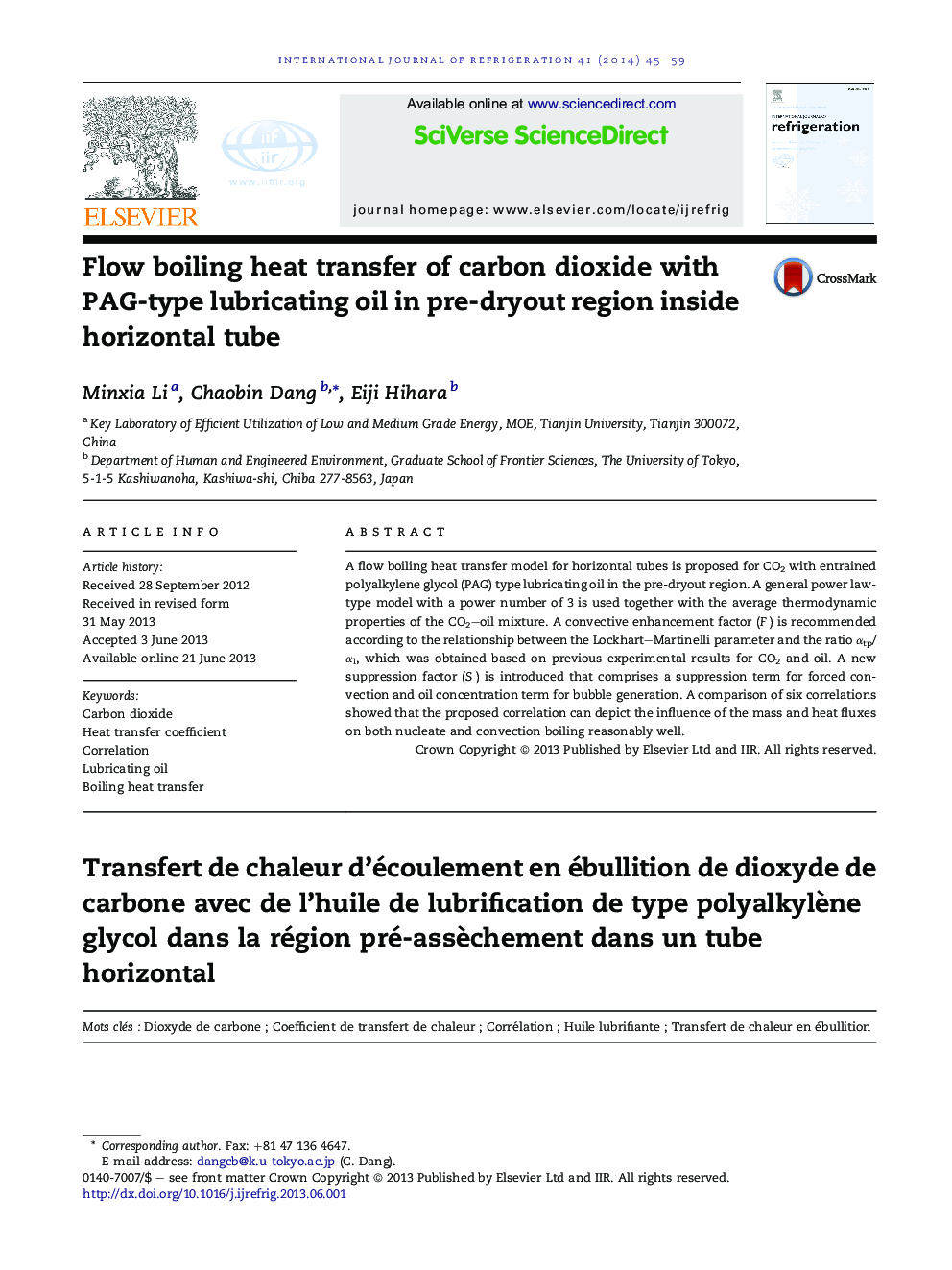| Article ID | Journal | Published Year | Pages | File Type |
|---|---|---|---|---|
| 789388 | International Journal of Refrigeration | 2014 | 15 Pages |
•A prediction model for the heat transfer coefficient that considers the properties of the CO2–oil mixture was proposed.•The new semi-empirical correlation was in very good agreement with the previous experimental data.•The proposed correlation can describe the change tendency of the heat transfer coefficient of a CO2–oil mixture well.
A flow boiling heat transfer model for horizontal tubes is proposed for CO2 with entrained polyalkylene glycol (PAG) type lubricating oil in the pre-dryout region. A general power law-type model with a power number of 3 is used together with the average thermodynamic properties of the CO2–oil mixture. A convective enhancement factor (F) is recommended according to the relationship between the Lockhart–Martinelli parameter and the ratio αtp/αl, which was obtained based on previous experimental results for CO2 and oil. A new suppression factor (S) is introduced that comprises a suppression term for forced convection and oil concentration term for bubble generation. A comparison of six correlations showed that the proposed correlation can depict the influence of the mass and heat fluxes on both nucleate and convection boiling reasonably well.
